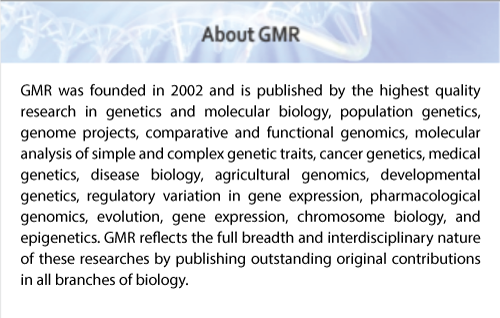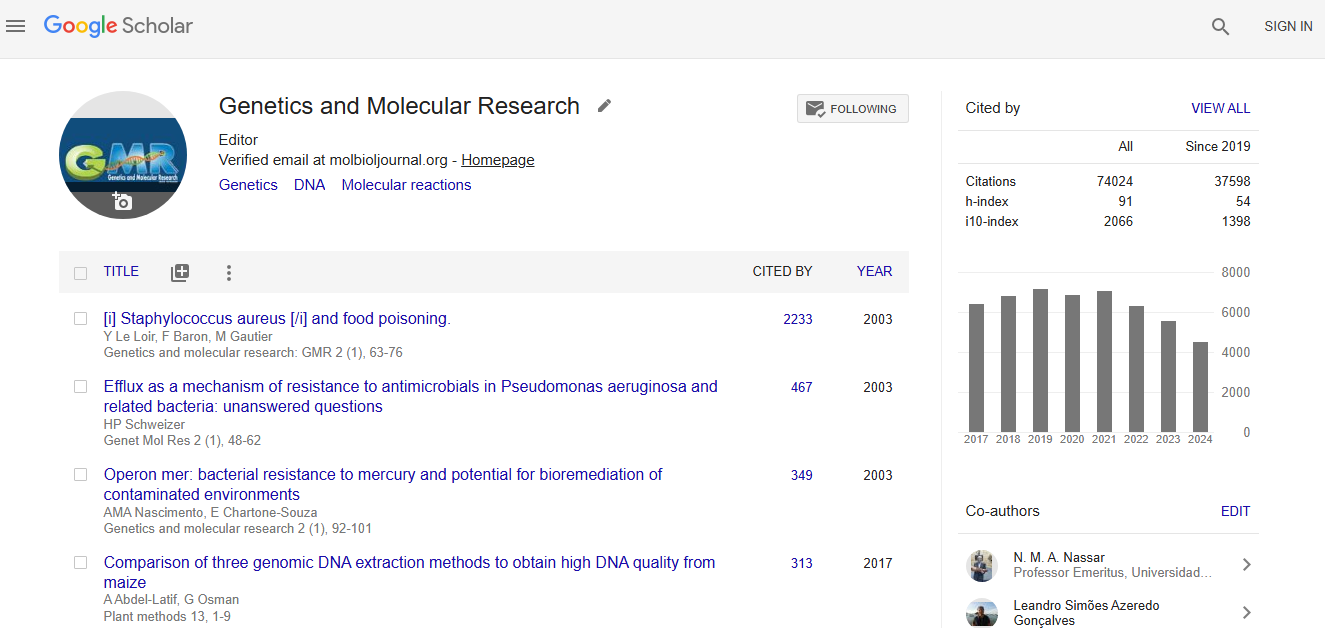Abstract
Avian sarcoma and leukosis virus gag gene in the Anser anser domesticus genome
Author(s): F. Zhu1, H. Jie3, L. Lian2, L.J. Qu2, Z.C. Hou2, J.X. Zheng2, S.Y. Chen1,N. Yang2 and Y.P. Liu1Endogenous retroviruses are regarded as ideal genetic markers for evolutionary analyses. Birds were some of the initial vertebrates found to contain endogenous retroviruses. However, few studies have investigated the presence and distribution of endogenous retroviruses in goose. In this study, we detected the avian sarcoma and leukosis virus gag gene in the genomic DNA of 8 Chinese native breeds using polymerase chain reaction method. The results indicated that a 1.2-kb avian sarcoma and leukosis virus gag sequence was integrated into all 8 goose breeds. The mean genetic pairwise distance was 0.918% among the investigated geese. To the best of our knowledge, this is the first report demonstrating the presence of the endogenous retroviruses in the domestic goose genome. The genetic structure should be further examined in the domestic goose. Endogenous retroviruses are regarded as ideal genetic markers for evolutionary analyses. Birds were some of the initial vertebrates found to contain endogenous retroviruses. However, few studies have investigated the presence and distribution of endogenous retroviruses in goose. In this study, we detected the avian sarcoma and leukosis virus gag gene in the genomic DNA of 8 Chinese native breeds using polymerase chain reaction method. The results indicated that a 1.2-kb avian sarcoma and leukosis virus gag sequence was integrated into all 8 goose breeds. The mean genetic pairwise distance was 0.918% among the investigated geese. To the best of our knowledge, this is the first report demonstrating the presence of the endogenous retroviruses in the domestic goose genome. The genetic structure should be further examined in the domestic goose.
Impact Factor an Index

Google scholar citation report
Citations : 74024
Genetics and Molecular Research received 74024 citations as per google scholar report
